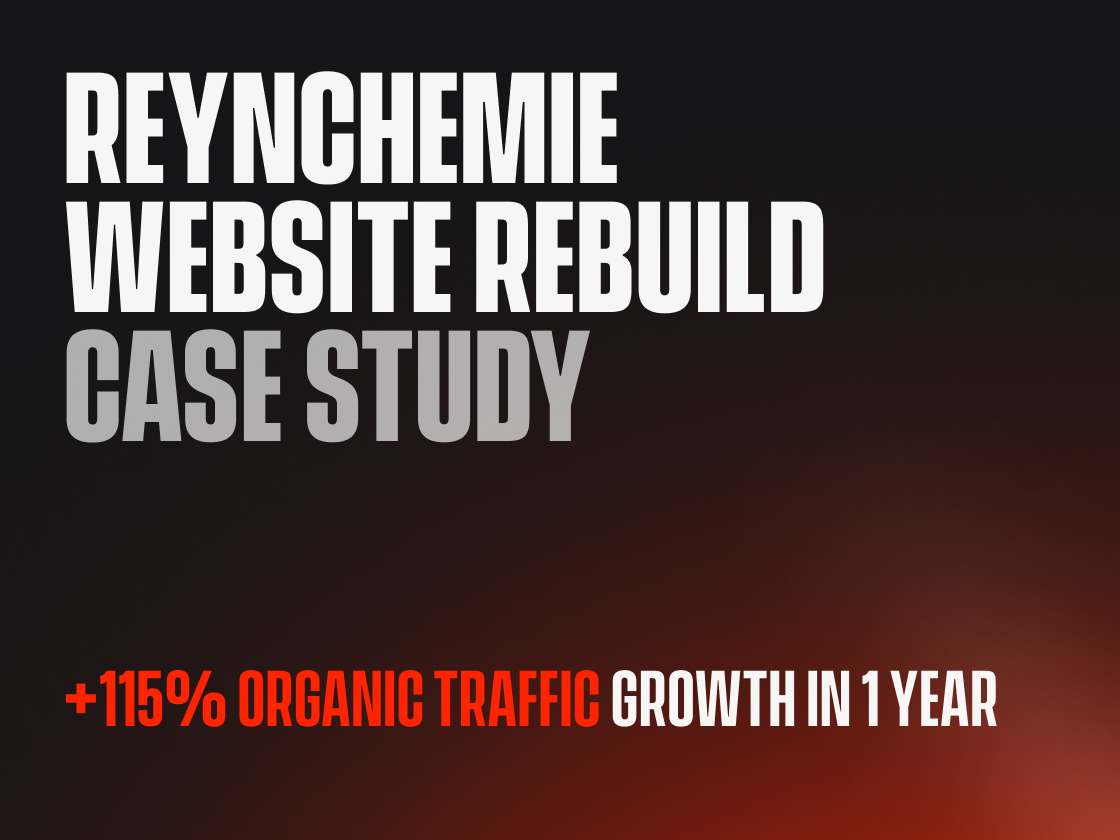Why Webflow itself isn't a magic solution. The expert wielding it is (With real-life example)

The platform doesn't automatically solve poor planning, bad design decisions, or fundamental misunderstandings about how users actually behave on websites.
The Reynchemie reality check
Case in point: Reynchemie, a specialized chemicals company, came to us with a problem. Their website was already built in Webflow. By all accounts, they should have been set up for success.
Instead, they had a mess.
The previous agency had delivered what I can only describe as a textbook example of how not to build a Webflow site. Unnamed CSS classes scattered everywhere like confetti. Heading levels jumping around like a kangaroo on caffeine. Images heavy enough to sink a small boat. And a user experience that seemed designed to confuse visitors rather than convert them.
But here's the kicker: even though it was built in Webflow, the marketing team couldn't actually edit their own website. No reusable components meant every update required custom development. No override fields for simple text changes. Images buried behind invisible div overlays, making it impossible to click and replace them without diving into the designer.
The visual design looked like it was assembled by someone who had never heard of their brand guidelines. Navigation that made finding the right product feel like solving a puzzle. Product information buried so deep you'd need archaeological training to find it.
This wasn't a WordPress problem or a Webflow problem. This was a competency problem.
What actually moves the needle
When we took over the Reynchemie project, we quickly realized that fixing the existing build would take longer than starting fresh. Sometimes the foundation is so broken that renovation isn't worth the effort.
So we rebuilt the entire site from scratch, but we did it strategically. We analyzed how real users actually behave on their site before writing a single line of code.
We redesigned the visual identity while keeping it aligned with their existing brand. We restructured the navigation to create clear, logical paths to products. We optimized product pages so visitors could actually understand what they were looking at and why they should care.
The technical rebuild addressed all the fundamental issues: properly named CSS classes that future developers could work with, compressed images that didn't require a coffee break to load, and a proper heading structure that search engines could parse without getting confused.
Most importantly, we built it so their marketing team could actually use it. Reusable components for consistent design updates. Override fields for easy text editing. Images that you can actually click and replace instead of hunting through layers of hidden divs.
The results speak for themselves
Within three months, Reynchemie's organic traffic more than doubled. More importantly, their conversion rate for offer requests increased by over 3x.
Those aren't numbers you get from switching platforms. Those are numbers you get from understanding user behavior, technical best practices, and conversion optimization.
Platform vs expertise
The lesson here isn't that Webflow is bad or that the previous agency was incompetent. The lesson is that tools are only as good as the person wielding them.
You can build a fast, SEO-optimized, conversion-focused website on WordPress with the right expertise. You can also build a slow, confusing, business-damaging website on Webflow without it.
The platform gives you capabilities. Expertise determines whether you actually use them effectively.
When businesses tell me they want to migrate to Webflow to solve their website problems, I always ask: what specifically do you think will change? If the answer is "everything will be better because Webflow," that's a red flag.
Better results come from better strategy, cleaner execution, and deeper understanding of your users. The platform is just the foundation.
What to look for instead
If you're evaluating web development options, don't just ask about the platform. Ask about process.
How do they analyze user behavior? What's their approach to conversion optimization? Can they show you examples of measurable business results, not just pretty designs?
Do they understand SEO beyond installing a plugin? Can they explain their CSS architecture? Do they compress images and optimize for performance, or do they just assume modern internet speeds will compensate for sloppy work?
Most importantly: will they take responsibility for business outcomes, or just deliver what you asked for and disappear?
The Reynchemie project succeeded because we treated it as a business problem, not a design problem. We measured what mattered and optimized accordingly.
That's not platform magic. That's just doing the work properly.
Why certification matters
This is exactly why Webflow created their partner certification program. Not every developer who can click around the Webflow designer actually understands how to build scalable, maintainable, business-focused websites.
Certified Webflow experts like Studio Neat have been rigorously vetted and tested by Webflow itself. We've proven our ability to deliver client-centered, scalable websites using best practices that actually work in the real world. It's not just about technical skills, it's about understanding how businesses use their websites and building accordingly.
When you work with a certified partner, you're not just getting someone who knows the platform. You're getting someone who understands the methodology behind effective web development and has been held accountable for delivering results.
Want to see the full Reynchemie case study? Check out the details at our case for Reynchemie to see how strategic improvements can transform business results, regardless of the platform.




